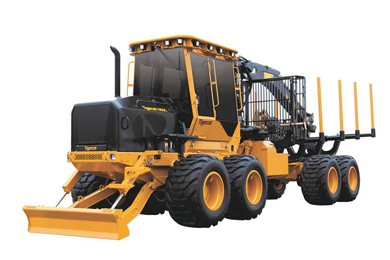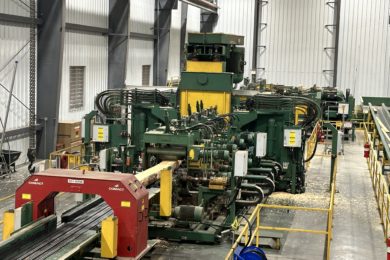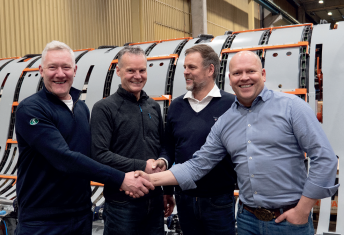The Tigercat 1055C forwarder represents a major update to the heavy-duty, 14-tonne 1055 model series.
The 1055C now offers Tigercat’s innovative low-wide™ bunk system found on the larger 1075C and 1085C models. Low-wide provides superior line-of-sight to the load and reduces operator strain. The 1055C is also available with a choice of three wagon frame lengths and fixed bunks.
The new Tigercat F135T85 hooked crane means more lift for the 1055C and less chance of the crane contacting the gate. Increased operator confi dence and more lifting power translates to decreased loading and unloading times and increased productivity. The maximum reach of the new crane is 8,5 m (335 in) and it has a gross lifting moment of 135 kNm (99,571 lbf). The 1055C is powered by the Tigercat FPT N67 in Tier 2 and Tier 4 configurations. Tigercat FPT engines offer quick load response, low operating costs and high power density, combined with excellent fuel economy.
The engines are backed by Tigercat warranty and support. The Tier 4f configuration is rated at 159 kW (213 hp) at 2,100 rpm and delivers a peak of 165 kW (221 hp) at 1,900 rpm. The Tier 2 configuration is rated at 159 kW (213 hp) at 2,100 rpm and produces a peak of 165 kW (221 hp) at 1,900 rpm.
Tigercat forwarders have unsurpassed service access to all electrical, mechanical and hydraulic systems. All parts in the forwarder can be lifted out as opposed to dropped from underneath the machine. Thoughtful component arrangement and access makes servicing Tigercat forwarders easier than competing machines.
The engine hood flips forward for great access to both sides of the engine and the entire engine compartment. The strong steel engine house cover forms a comfortable, spacious work platform in the open position.
As with the rest of the Tigercat forwarder line-up, the operating environment is expansive and comfortable with optimized sight lines and ergonomics. Sound levels are very low. Lighting, operator controls and interface and the climate control systems are well engineered, contributing to high productivity and reduced operator fatigue during long shifts.







